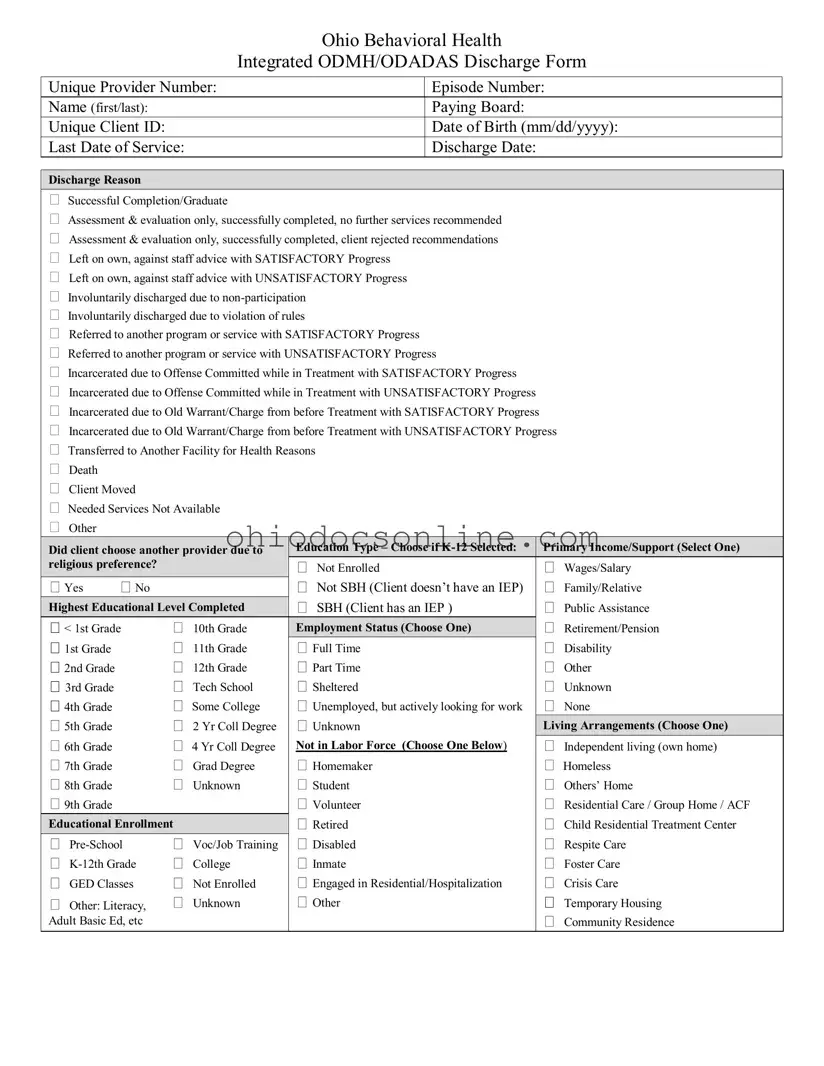Ohio Behavioral Discharge Template in PDF
The Ohio Behavioral Discharge Form is a document used to record the discharge details of individuals receiving behavioral health services in Ohio. This form captures essential information such as the client's name, unique identifiers, and reasons for discharge. It serves as a vital tool for providers to ensure continuity of care and to document the client's progress and outcomes.
Open Editor
